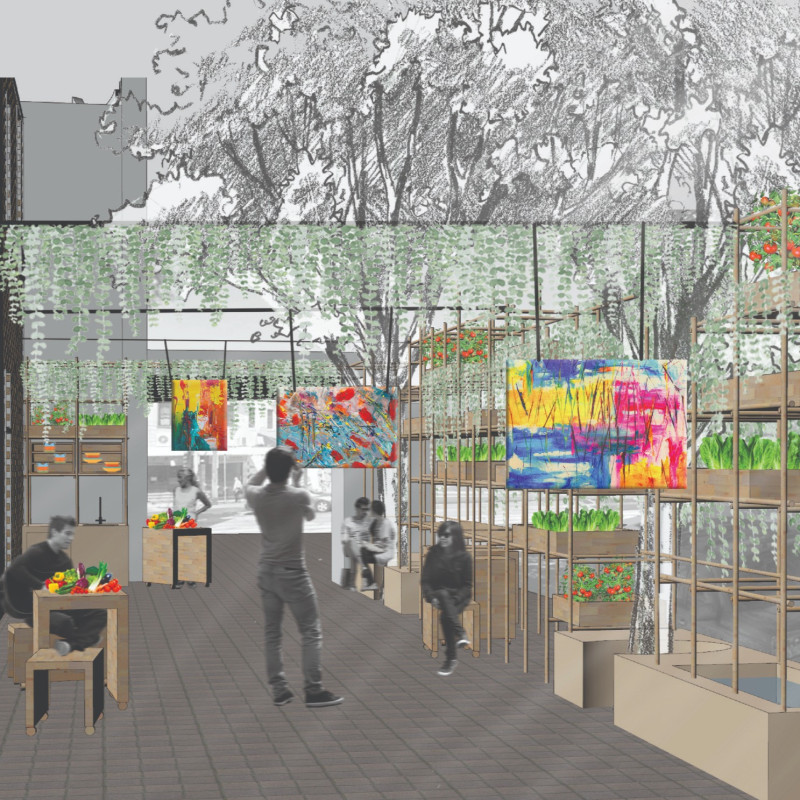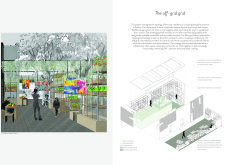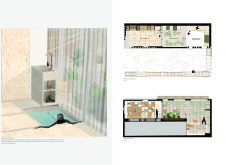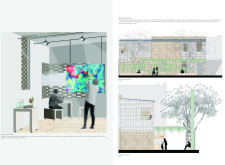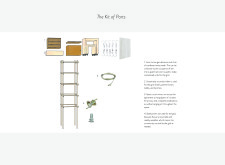5 key facts about this project
The project features a multi-faceted layout consisting of retail areas, micro-apartments, shared gardens, kitchen atriums, and public spaces. Each component is designed to encourage social interaction and foster a sense of community, while simultaneously offering private living quarters that are adaptable to individual needs. The architecture is characterized by its use of locally sourced materials, reflecting an environmental consciousness that aligns with contemporary urban housing demands.
Innovative Modular Design
A distinguishing feature of "The Off-Grid Grid" is its innovative modular design, which emphasizes adaptability. The living spaces are conceived as customizable environments; micro-apartments integrate sleeping, bathing, and working functions into compact areas that maximize utility. This approach not only optimizes space but also encourages residents to personalize their surroundings. Furthermore, the grid system employed in the structural framework allows for easy reconfiguration, making it possible to adapt spaces according to evolving community needs.
Sustainable Material Selection
The project showcases a strategic selection of sustainable materials, all contributing to its overall integrity and functionality. Locally sourced timber forms the basis of structural elements, planter boxes, and communal seating, promoting a warmer aesthetic while supporting local economies. Perforated bricks are incorporated into the facades, aiding in natural ventilation and creating a seamless dialogue between private living areas and public zones. Additionally, concrete and glass are used judiciously, ensuring durability and facilitating light transmission within the spaces.
Urban Community Integration
"The Off-Grid Grid" emphasizes the importance of urban community integration through the incorporation of green spaces. Vertical and horizontal gardens enhance the overall environment, contributing to air quality while allowing residents to engage in urban gardening. Solar panels, rainwater harvesting systems, and energy-efficient glazing emphasize the project's commitment to sustainability and reducing the ecological footprint.
The thoughtful arrangement of spaces and attention to materiality in "The Off-Grid Grid" deliver a design that not only meets contemporary living standards but also propels urban architecture towards a more sustainable and integrated future. For more information on the architectural plans, sections, and overall design ideas that inform this project, explore the detailed project presentation.


